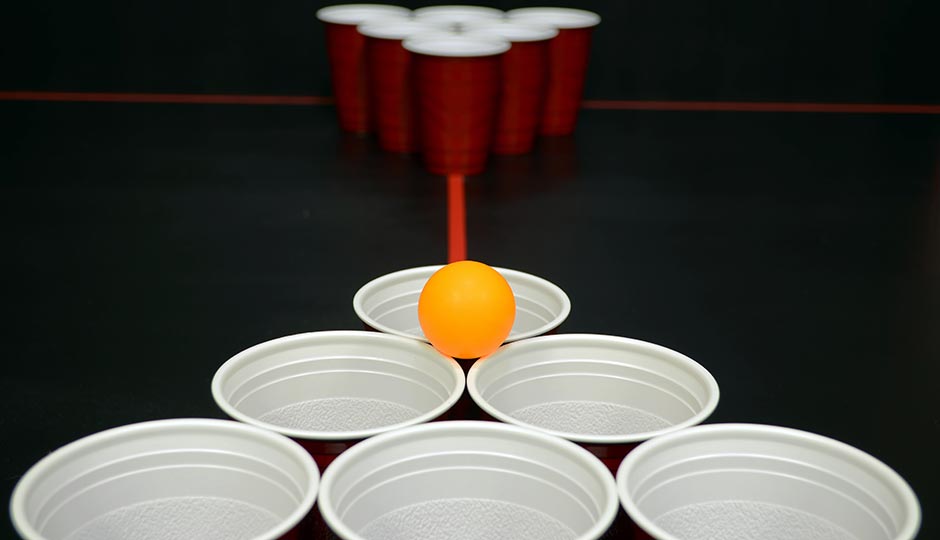Local Colleges Still Losing War Against Student Drinking
Pity the poor American institution of higher learning. Student drinking on campuses leads to property damage, arrests, injuries and deaths, hazings, and a tsunami of reports of student sexual assaults. (Research shows that 89 percent of those assaults involve drinking.) A recent study declared Pennsylvania colleges sixth in the nation in alcohol arrests of students, led by Shippensburg, East Stroudsburg, Lehigh, Penn Tech, Penn State and Kutztown — not the sort of high ranking universities crave. So naturally, administrators are doing their damnedest to clamp down on alcohol. At Swarthmore College, for example, new rules — no more hard liquor at school-sponsored parties, no more drinking games like beer pong, no more punch or party bowls — went into effect on campus in the fall of 2014. Students, predictably, were not enthused. “Seriously — can the admin with a straight face — indeed genuinely — defend these rules?” one incredulous undergrad demanded in the student newspaper, the Daily Gazette.
A year and a half later, a new report from Swarthmore’s department of public safety shows that while alcohol incidents at the campus’s three major social events dipped slightly in the first year of the more stringent prohibitions, they’ve since soared to new heights. (Nifty chart here.)
Students, understandably enough, are using the hikes to discredit the tighter restrictions, saying that where they used to just go to school-sponsored parties and drink beer, now there’s a lot more pregaming, with Swatties lubricating with hard liquor before venturing out among their peers. From the Daily Gazettte:
Michael Wheeler ’16 … spoke about the party scene he experienced as a freshman. “Parties used to be in the basement of Olde Club and Paces. You would just walk in and there would be drinks out on the counter available to everyone,” he said. Now, most parties are in the fraternity houses and alcohol is served over the counter by party hosts.
Wheeler added, “There is definitely a stronger culture of pregaming.”
At Penn, in the wake of a rise in alcohol-related incidents, a 2014 report by a commission appointed to study campus drinking found that 87 percent of freshmen were pregaming. Starting in 2013, the Penn administration began inviting undercover cops to patrol for underage drinkers at the campus’s annual Spring Fling.
At Temple, a student visiting from West Chester University died after falling from a roof during 2013’s Spring Fling. University president Neil Theobald cancelled the event for 2014, saying, “It’s kind of been hijacked by a group of people that make this into a bacchanal, a drinking fest.”
Crackdowns like this may be futile, but they’re also cyclical. Back in the 1990s, a flurry of deaths and accidents prompted college presidents to declare alcohol abuse “the greatest threat to campus life,” according to the New York Times, and the federal government demanded that colleges step up and intervene. Millions of dollars in studies and research followed, along with a host of new regulations and alcohol-education programs on campuses. None made much of a dent. After the on-campus falling death of an alumnus prompted a crackdown at Penn in 1999, 94 percent of undergrads there told the Daily Pennsylvanian the new policies “would not force them to drink less.” Penn cancelled Spring Fling that year.
Public opinion as to how diligently colleges should serve in loco parentis to their students is cyclical, too. In the ’60s and ’70s, students agitated to be set free from their administrative overseers. In the ’90s, in the initial wave of attention to political correctness — witness Penn’s notorious “water buffalo” incident — they wanted those overseers to play a more active role. That’s what they’re arguing for again now, as they go on hunger strikes, boycott student newspapers and occupy administrators’ offices while demanding “safe spaces,” protection from microaggressions, trigger warnings on books, and, at Princeton, the creation of officially sanctioned “affinity rooms” where racial and geographic groups can celebrate their cultures in isolation from the college population at large. All these changes require greater, not less, institutional control.
Hunger strikes are one thing. Vodka strikes are another. Students may long to unshackle themselves from this one particular aspect of in loco parentis, but alcohol restrictions are also being driven by the burgeoning business of on-campus risk management, with ever more administrative bureaucrats specially trained in “best practices” for dealing with everything from drunken sexual encounters to fraternity hazing to a dropout who shows up with a gun. At Swarthmore under the new alcohol rules, notes senior student president Laura Hyder, “The biggest change is that it has become better for the school liability-wise.” College drinking claims almost 2,000 young lives every year. Students today find themselves in the peculiar position of arguing that their psyches need swaddling from even inadvertent verbal offenses, but, dammit, they must be allowed to wallow in illegal underage drinking. Good luck with that, kids. But hey — stay off the roof.
Follow @SandyHingston on Twitter.



